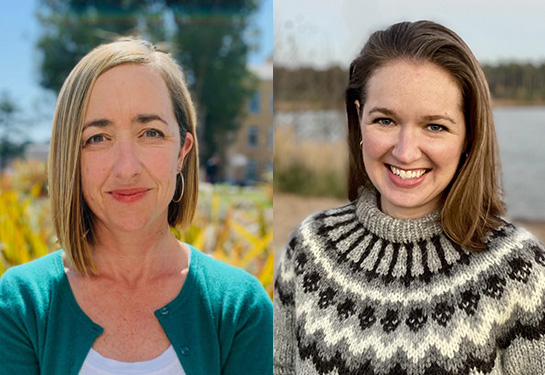Leadership message: Spotlight on UC Davis’ Violence Prevention Research Program
Dear Colleagues,
The first Friday in June marks National Gun Violence Awareness Day and the start of Wear Orange Weekend. Wear Orange originated in 2015, a year that would have included Hadiya Pendleton’s 18th birthday. At 15, Hadiya was shot and killed on a Chicago playground just days after she marched in President Obama’s second inaugural parade. Hadiya’s childhood friends honored her life by wearing orange, the color hunters wear to stay safe, and the teens sparked what is now a national commemoration and call to action.
In the United States, there are more than 130 new victims of firearm violence to commemorate every day. Mass shootings dominate the headlines and yet most shootings, including homicides, suicides, and nonfatal shootings, don’t make the news. Families and communities are devastated day after day, but it doesn’t have to be this way. Violence is preventable.
At the UC Davis Violence Prevention Research Program (VPRP), we strive to answer Hadiya’s friends’ call to action every day. We are a multi-disciplinary program of research and policy development focused on the causes, consequences, and prevention of violence. We are particularly focused on firearm violence and house the California Firearm Violence Research Center, the first state-funded center for firearm violence research, and the BulletPoints Project, which teaches clinicians how to reduce the risk of firearm injury for their patients.
For decades, VPRP, led by director Dr. Garen Wintemute, conducted leading research on firearms and firearm policies – often when few else did. As the field and funding for it has grown, so have we. To advance our research on violence and its prevention, we built a team with wide-ranging expertise, including medicine, epidemiology, statistics and biostatistics, sociology, criminology, law, economics, and policy analysis.
These fields converge with the public health approach to violence, a methodology and mindset Dr. Wintemute helped to develop in the 1980s. We still apply this approach to everything we do, looking at violence and its prevention as a population health issue. This means that in addition to studying the role of firearms, our team also researches the social structures that perpetuate and create environments for violence.
This is especially important because the burden of firearm violence is not equally distributed across the population. Disparities driven by social and structural determinants of health – like race and neighborhood disadvantage – are long-standing and increasing, further exacerbated by the COVID-19 pandemic. But our research demonstrates that strategic investment in historically marginalized communities, evidence-based policy, and community-driven violence prevention initiatives can lead to a safer, healthier, and more equitable future.
It may seem daunting, but incremental change adds up: we’ve done it in California. By layering policies that work in synergy to reduce risk, California’s gun violence rates steadily receded over at least the last two decades – a sharp contrast to the rest of the nation, which saw gun violence increasing over the same years. While the pandemic coincided with spikes in violence nationwide, including in California, the state today has one of the lowest firearm mortality rates in the country.
In looking at the next opportunities to prevent violence, there are many ways where VPRP is developing knowledge and driving change. We are defining the scope of firearm violence and proximity of risk in people’s daily lives. We are identifying firearm purchasing patterns of mass shooters and people at risk of suicide, which may be used to develop predictive tools to identify and prevent tragedies from occurring, and studying the policy tools already being used today. We’re teaching clinicians how to engage gun-owning patients respectfully and collaboratively to reduce their risk of harm. Through our newest area of scholarship, we are developing a greater understanding of contemporary political violence risks.
VPRP believes in the value of scientific research in addressing major health and social problems. Our team conducts research that informs policy and programs that prevent violence, enhance safety, and heal communities. Our work empowers communities to speak up to help realize a safer future.
This National Gun Violence Awareness Day, we at VPRP invite the UC Davis Health community to join us in wearing orange to honor the victims and survivors of gun violence and sharing the message that gun violence is preventable – and to keep sharing that message all year long.
Be well,
Amy Barnhorst, M.D.
Associate Director, Violence Prevention Research Program and California Firearm Violence Research Center
Director, BulletPoints Project
Professor, Psychiatry and Behavioral Sciences and Emergency Medicine
Vicka Chaplin, M.P.H., M.A.
Director of Education and Communication, Violence Prevention Research Program and California Firearm Violence Research Center

Discover more about our work and stay up-to-date on the latest research, news, events, and media highlights from our team by subscribing to our monthly newsletter. To stay connected, follow @UCDavisCVP on Twitter and LinkedIn.





